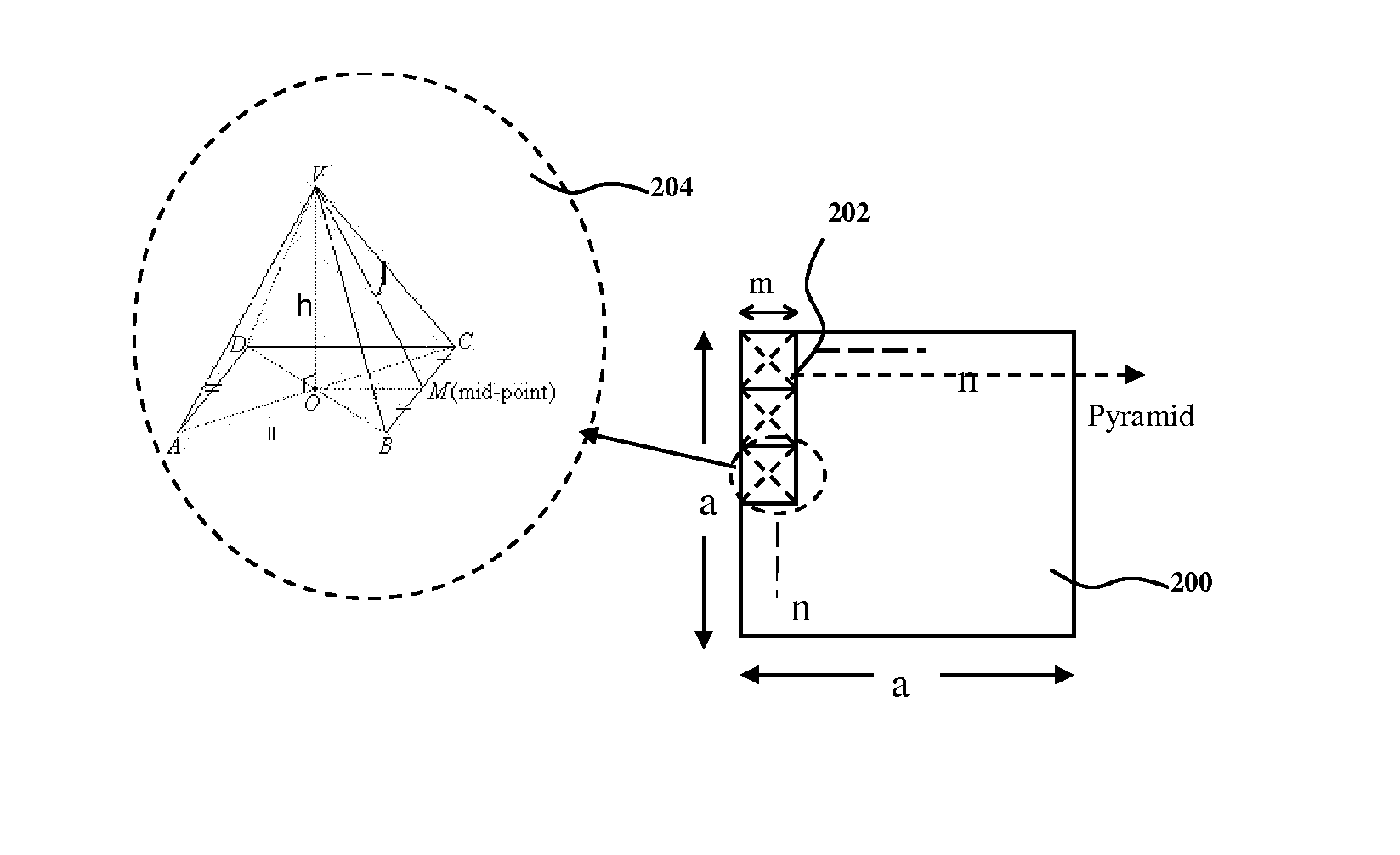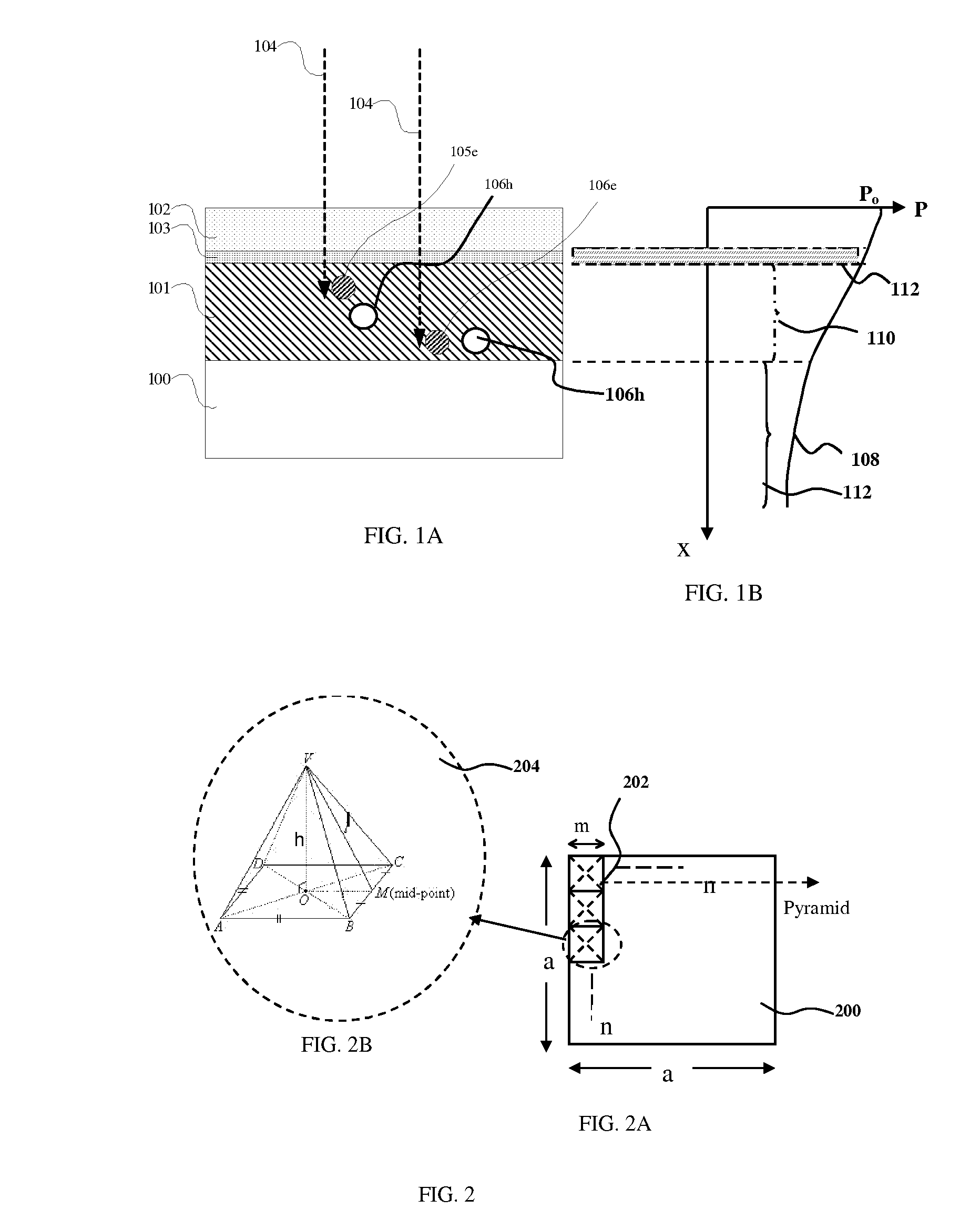High efficiency photovoltaic cells and manufacturing thereof
a photovoltaic cell, high-efficiency technology, applied in the manufacture of final products, sustainable manufacturing/processing, electrolytic capacitors, etc., can solve the problems of increasing the cost of production, and not being widely accepted as an alternative energy source solution. achieve the effect of reducing the cost and increasing the power generation capacity
- Summary
- Abstract
- Description
- Claims
- Application Information
AI Technical Summary
Benefits of technology
Problems solved by technology
Method used
Image
Examples
Embodiment Construction
[0042] According to the present invention it is our object to provide several photovoltaic cell structures that increase the surface area, which increases the junction area, which increases conversion efficiency. Before giving the detail explanation of the photovoltaic cell structures and their manufacturing, several simulation results are first given to show the benefits of increasing the surface area.
[0043]FIGS. 2A and 2B are schematics representing the pyramid shaped structure 204 uniformly arranged on the substrate 200. FIG. 2C shows the simulation results as function of the pyramid height 7, with pyramid base m as the parameter. In FIG. 2A, n number of the pyramids 204 are arranged on the axa sized substrate 200. T / A is the ratio of the surface area of the total pyramids T to the total area of axa A. It is assumed that we could make the n number of pyramids 202 on the axa-area surface. Increase of the ratio indicates the increasing increment of the surface area T as compared t...
PUM
 Login to View More
Login to View More Abstract
Description
Claims
Application Information
 Login to View More
Login to View More - R&D
- Intellectual Property
- Life Sciences
- Materials
- Tech Scout
- Unparalleled Data Quality
- Higher Quality Content
- 60% Fewer Hallucinations
Browse by: Latest US Patents, China's latest patents, Technical Efficacy Thesaurus, Application Domain, Technology Topic, Popular Technical Reports.
© 2025 PatSnap. All rights reserved.Legal|Privacy policy|Modern Slavery Act Transparency Statement|Sitemap|About US| Contact US: help@patsnap.com



